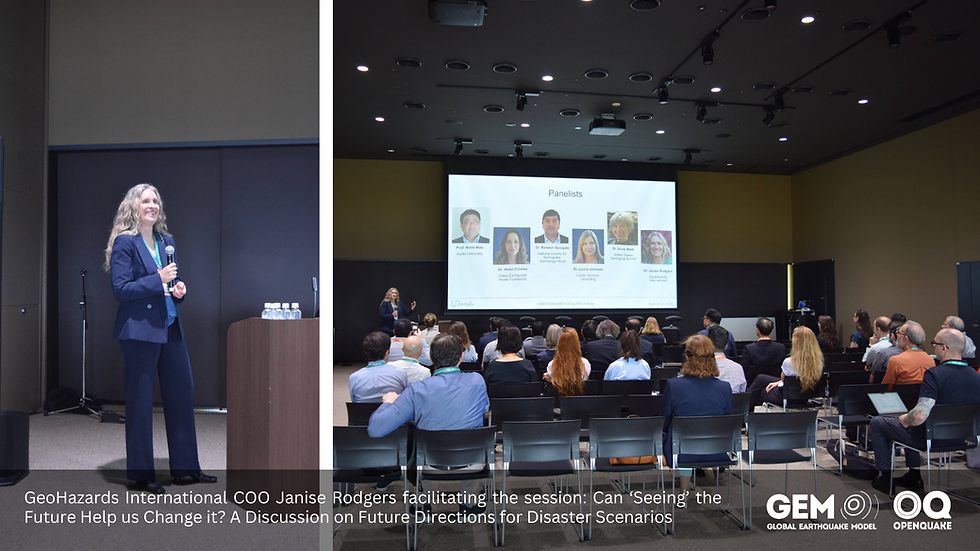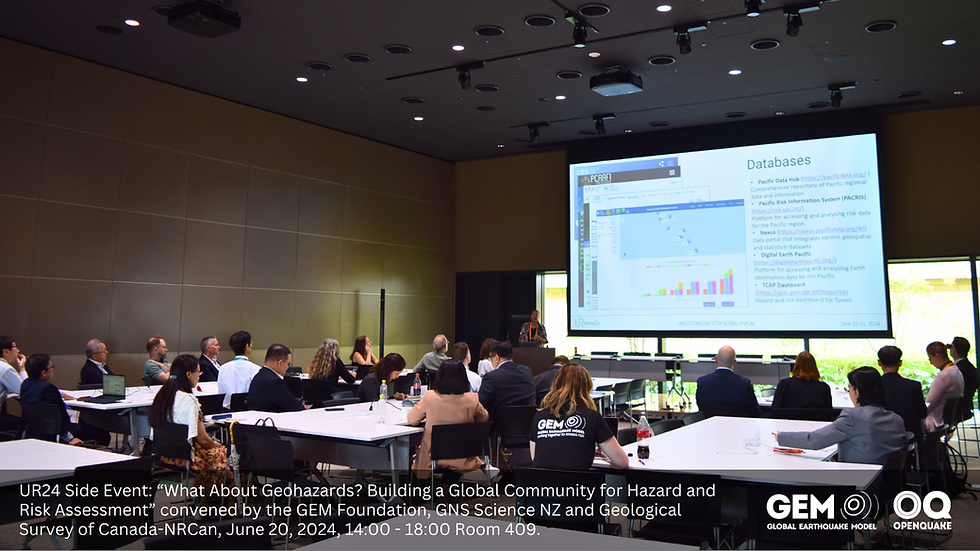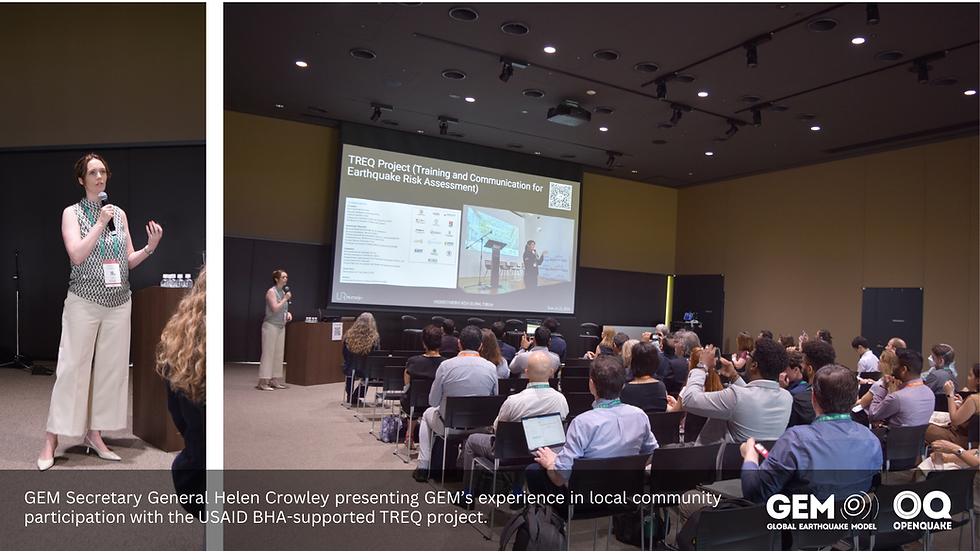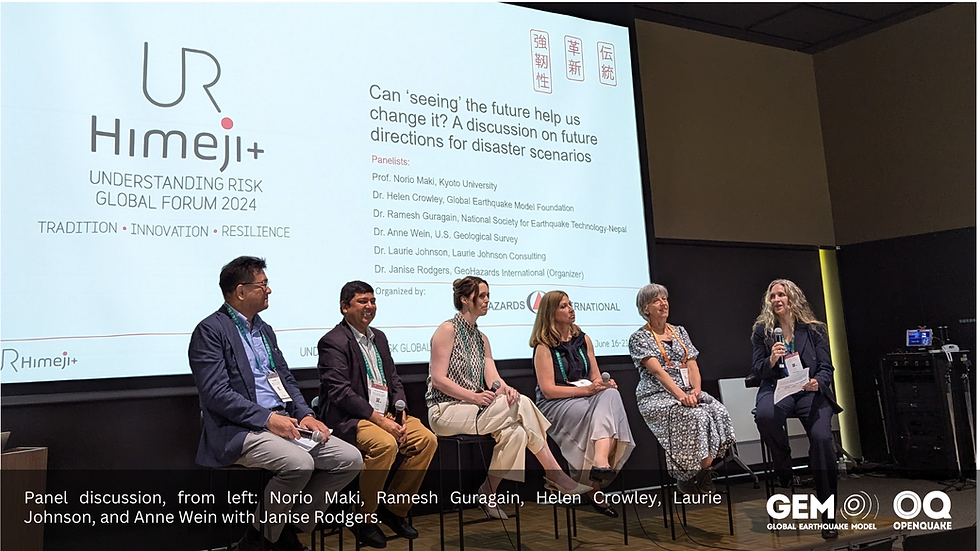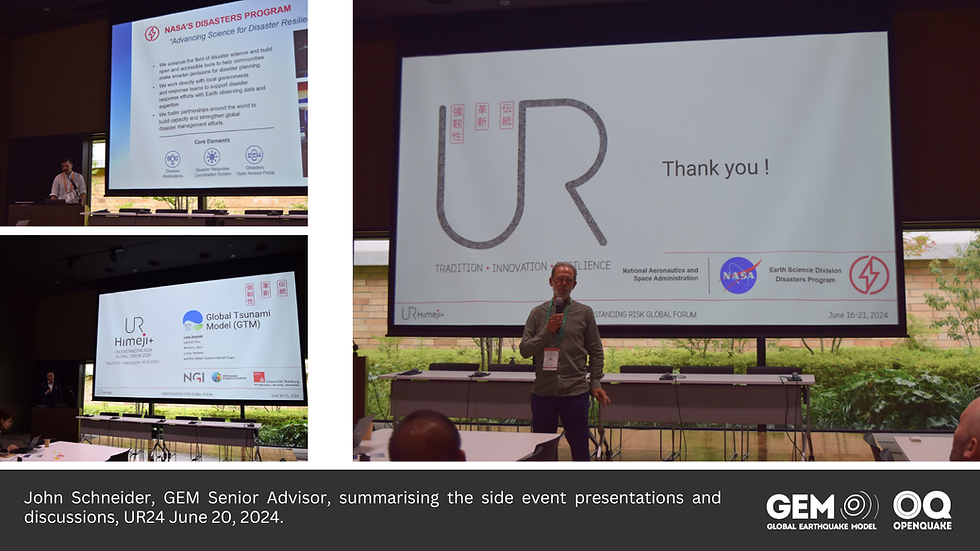Understanding Risk Global Forum 2024 (UR24)
June 16-21, 2024
Himeji, Japan
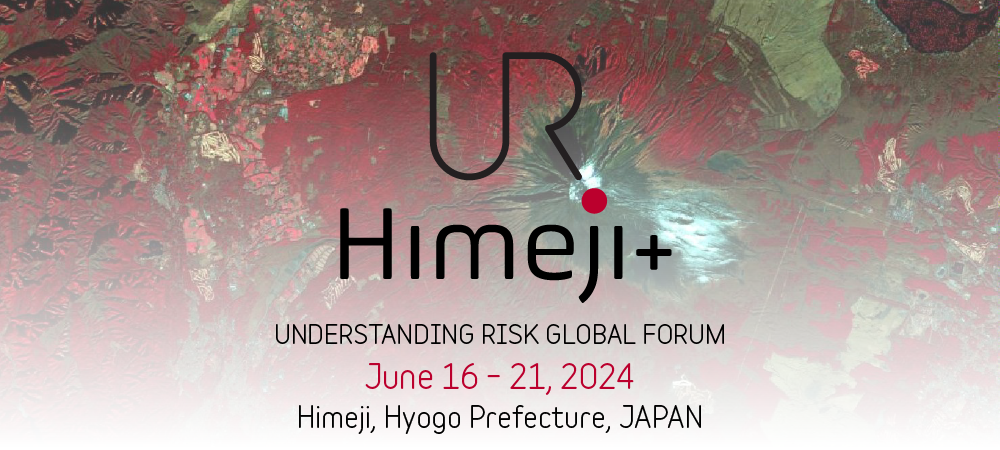
Image Credit: UR24 (https://understandrisk.org/ur24/)
OVERVIEW
The Global Earthquake Model (GEM) Foundation is proud to participate in the Understanding Risk Global Forum 2024 (UR24) in Himeji, Hyogo Prefecture, Japan, from June 16th to 21st, 2024. GEM, in collaboration with the World Community of Geological Surveys WCOGS, will be actively involved on June 18th-20th, leading a technical session titled "Building Geohazards Risk Assessment Capacity at the National Level." GEM will also host a focus event on the same topic for more in-depth discussions, allowing for a more interactive exchange of ideas and promoting collaboration among stakeholders.
GEM invites attendees from national governments, disaster risk reduction agencies, academia, and other stakeholders interested in strengthening earthquake risk assessment capacities to:
Participate in our technical session to gain in-depth knowledge of our work.
Attend our side event for focused discussions and networking opportunities.
Visit our exhibition booth, in the “friends of NASA” space, to explore our open seismic risk assessment resources.
Convenors/Speakers
The State of Practice in Risk Assessment and Needs for Improvement at National to Sub-National Level

Nicolas Pondard
1C - Panelist

Shubharoop Ghosh
1A - Panelist

Ron Eguchi
1A - Moderator

Humberto Lopez
1B - Moderator
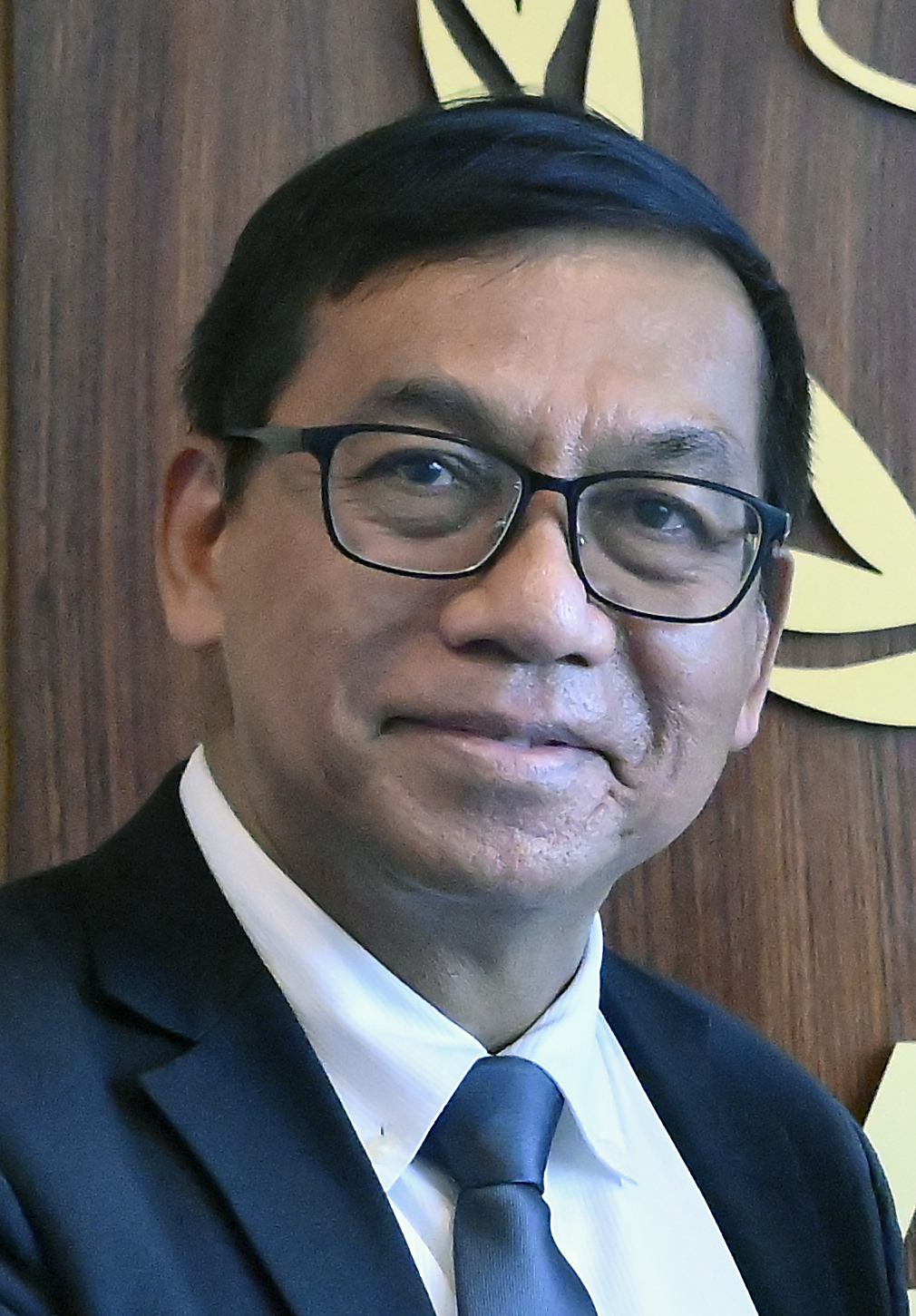
Renato Solidum, Jr.
1C- Panelist
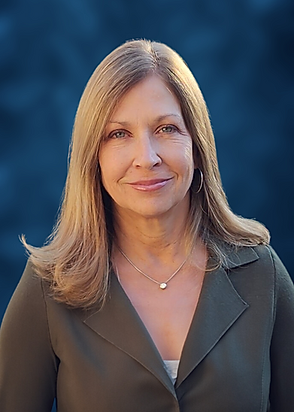
Laurie Johnson
1A - Panelist
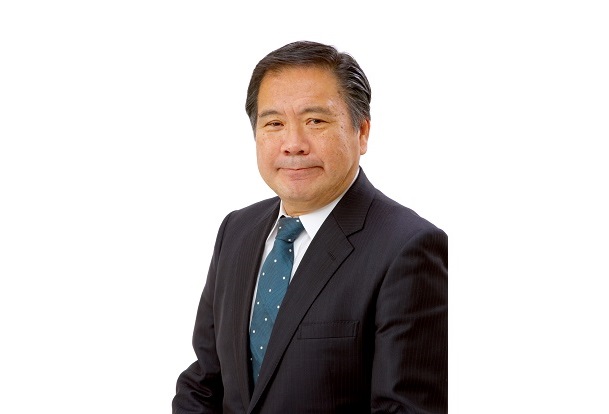
Takara Kaoru
1B - Speaker
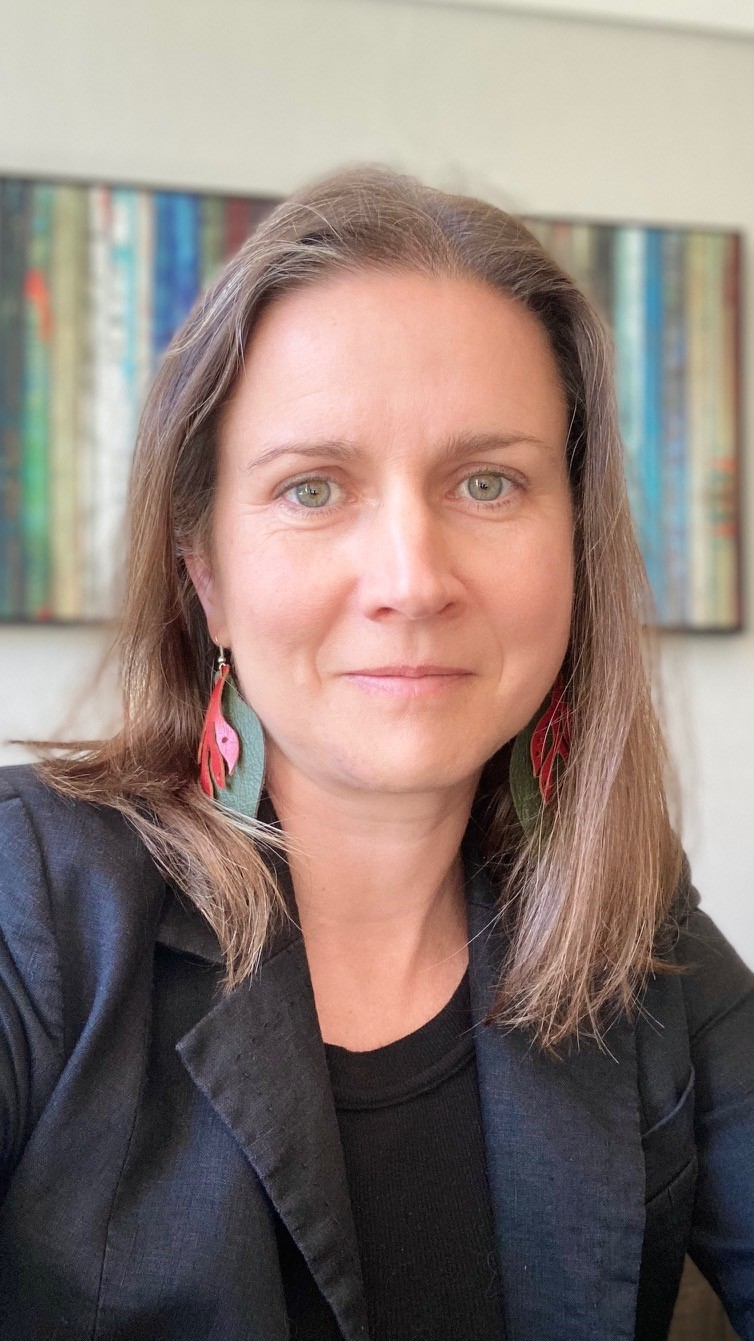
Malaika Ulmi
1C - Convenor

Anil Pokharel
1C - Panelist
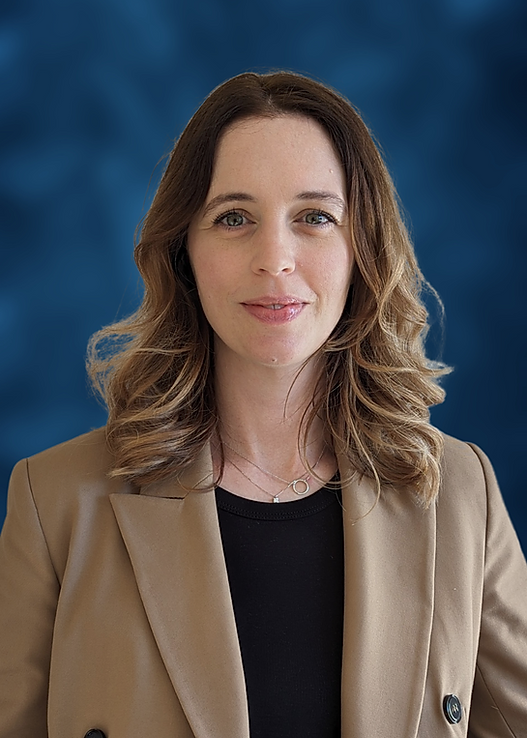
Helen Crowley
1A - Panelist

Helen Crowley
1B - Speaker
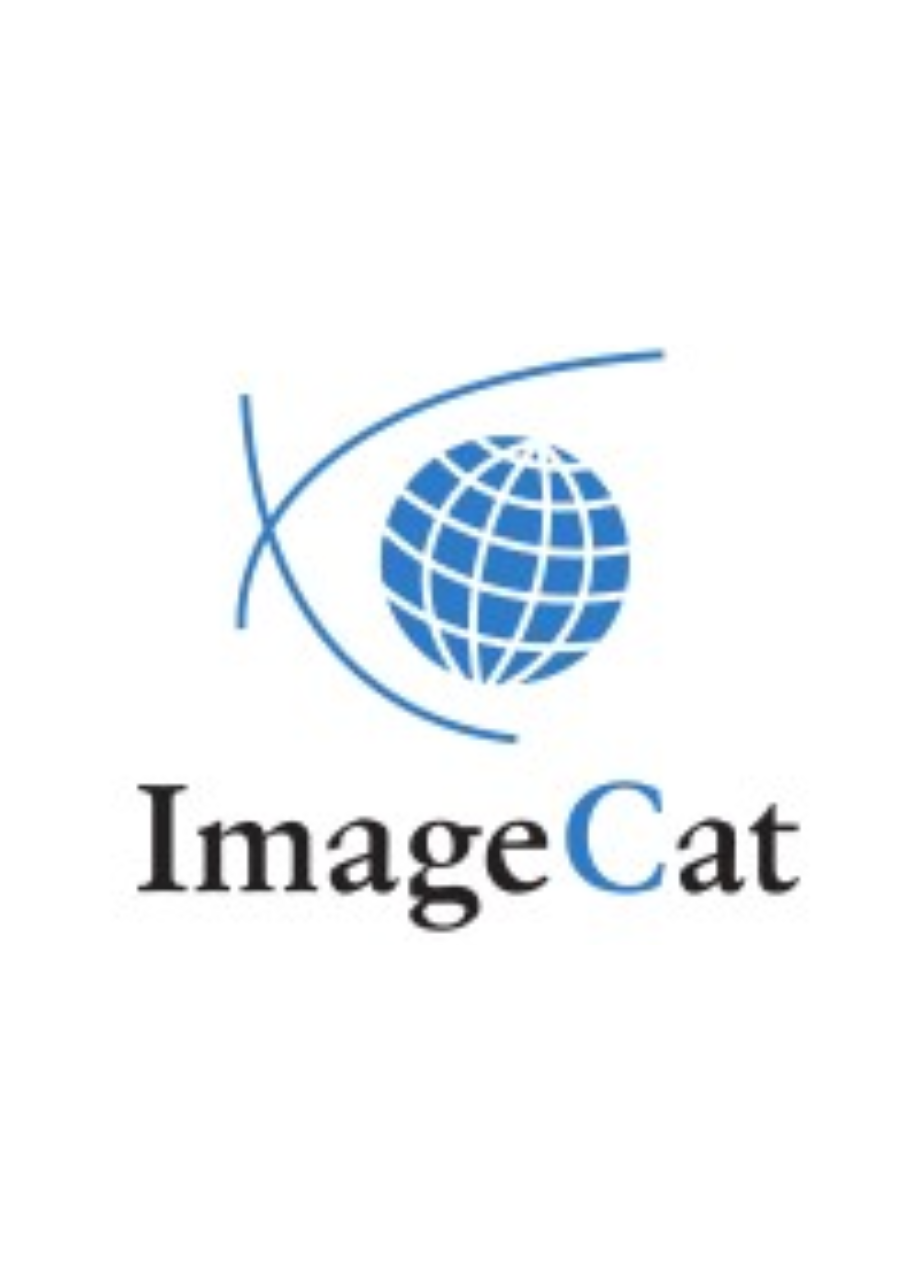
ImageCat, Inc.
1A - Convenor

Shunichi Koshimura
1A - Panelist

The World Bank
1B - Convenor

Renato Solidum Jr.
1B - Speaker
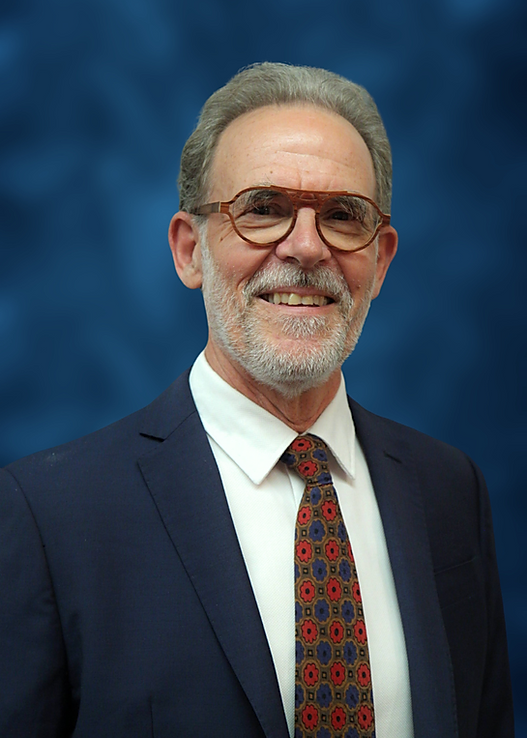
John Schneider
1C - Convenor
AGENDA
The State of Practice in Risk Assessment and Needs for Improvement at National to Sub-National Level
Geohazards such as earthquakes, volcanic eruptions, tsunamis and landslides represent a significant proportion of the global disaster risk. Yet the capabilities for assessing risk at national to sub-national level are often insufficient. This session will discuss the state of practice and identify the needs for improving hazard and risk assessment capabilities. A complimentary Focus Day event will propose the way forward through the development of a global collaboration network.
Time | Topic | Speaker | Organisation |
|---|---|---|---|
Nicolas Pondard | Senior Disaster Risk Management Specialist, The World Bank | ||
Renato Solidum, Jr. | Secretary, Department of Science & Technology-Philippines | ||
Anil Pokharel | Chief Executive, National Disaster Risk Reduction & Management Authority (NSET), Nepal | ||
Shunichi Koshimura | Deputy Director, IRIDes-Tohoku University | ||
Shubharoop Ghosh | Vice President, ImageCat, Inc. | ||
Laurie Johnson | CEO, Laurie Johnson Consulting | ||
Helen Crowley | Secretary General, GEM | ||
18 June
10:30 - 12:30 (Plenary) | Plenary: Richter Resilience: Advancing Seismic Protection Worldwide | The World Bank | ----- |
Ron Eguchi | CEO, ImageCat, Inc. | ||
Takara Kaoru | President, NIED Japan | ||
Helen Crowley | Secretary General, GEM | ||
Renato Solidum Jr. | Secretary, Department of Science and Technology Philippines-PH | ||
Humberto Lopez | Director, World Bank Country Turkyie | ||
Malaika Ulmi | Nat. Hazards & Climate Change Geoscience Program Manager, Geo Survey of Canada | ||
18 June
09:30 - 10:30
Medium Hall | Symphony of Tradition and Innovation: Orchestrating Global Resilience in Diverse Communities | ImageCat, Inc. | ----- |
18 June
12:30 - 13:30
Room 409 | What About Geohazards? The State of Practice in Risk Assessment and Needs for Improvement at National to Sub-National Level | John Schneider | Senior Advisor, GEM |
REGISTRATION
Stay tuned for more details!
We will provide further registration details for GEM's sessions at UR24 in the coming weeks. For inquiries, please contact info@globalquakemodel.org.
Links
EXHIBITION
Visit GEM's booth in the "Friends of NASA" area. Explore open seismic risk resources and chat with our earthquake experts!
 |  |
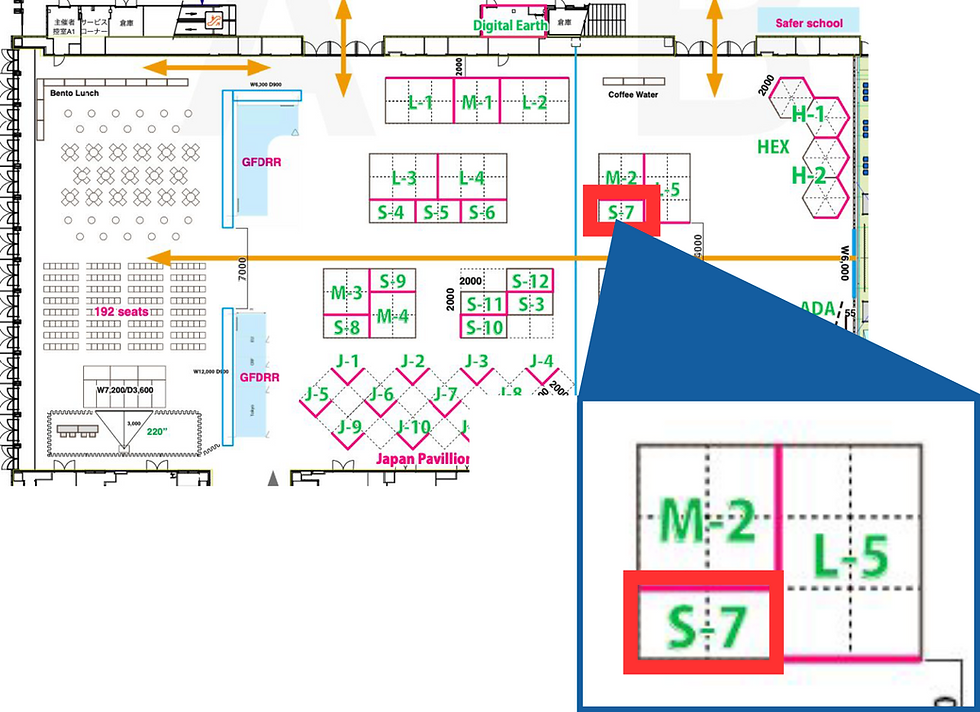 |  |
LOCATION
HOTEL
TRANSPORTATION
Taxi
Taxis in Japan are quite expensive and you may prefer other public transportation services. However, in smaller cities or late evening hours, they may be the only solution to get to your destination. Taxi stands may be easily found outside airports and train stations but you also may flag down a taxi in the street. You may also use a taxi app or request the reception of your hotel to call a taxi for you.
A couple of things to know when using a taxi in Japan:
A plate on the dashboard in the lower corner of the windshield indicates whether a taxi is vacant or not, red indicates vacant, green indicates occupied, exactly the other way around you may expect.
When boarding and getting out of the taxi, DON'T touch the door, the left rear door is opened and closed automatically by the driver.
If you don't speak Japanese, the easiest thing to do is to hand over the written address of your destination to the driver - or to show it on a map, if available, as the address system in Japan can be very confusing, even for the taxi driver. Most of the taxis accept credit card payments.
If you use cash, try to avoid using large bills for small amounts as the driver may not have enough change.
Last but not least: Tipping is not expected/done in Japan.
Local buses in Himeji (Shinki Bus)
Using the local bus, Shinki Bus may be the most convenient solution to move in Himeji. You will need cash or a rechargeable IC card https://www.japan-guide.com/e/e2359_003.html before boarding the bus. You may also purchase special fare tickets in advance at the bus station ticket office.
Check the destination on the front and side of the bus. Always board the bus at the rear door and exit at the front door. When paying using cash, take a number from the small box next to the entrance and keep it with you; you will need to drop the number together with your cash in a box near the driver when getting off the bus. When paying with an IC card, hold the card to the reader near the entrance until you hear an acoustic signal. If you purchased a special fare ticket in advance, take a number as if you'd pay with cash; when getting off the bus, drop the number in the ticket box next and show the special ticket to the driver.
A good solution for foreign travelers is the Hyogo Amazing Pass, a prepaid one-day ticket that allows you to use all orange Shinki Buses for 1,000 JYN for one day. You can purchase your Hyogo Amazing Pass online here and only need to show the screenshot of your mobile ticket when getting off the bus.
RESOURCES
Conference resources for downloading
Videos
Gallery
Maps
Recording
Videos

Gallery
